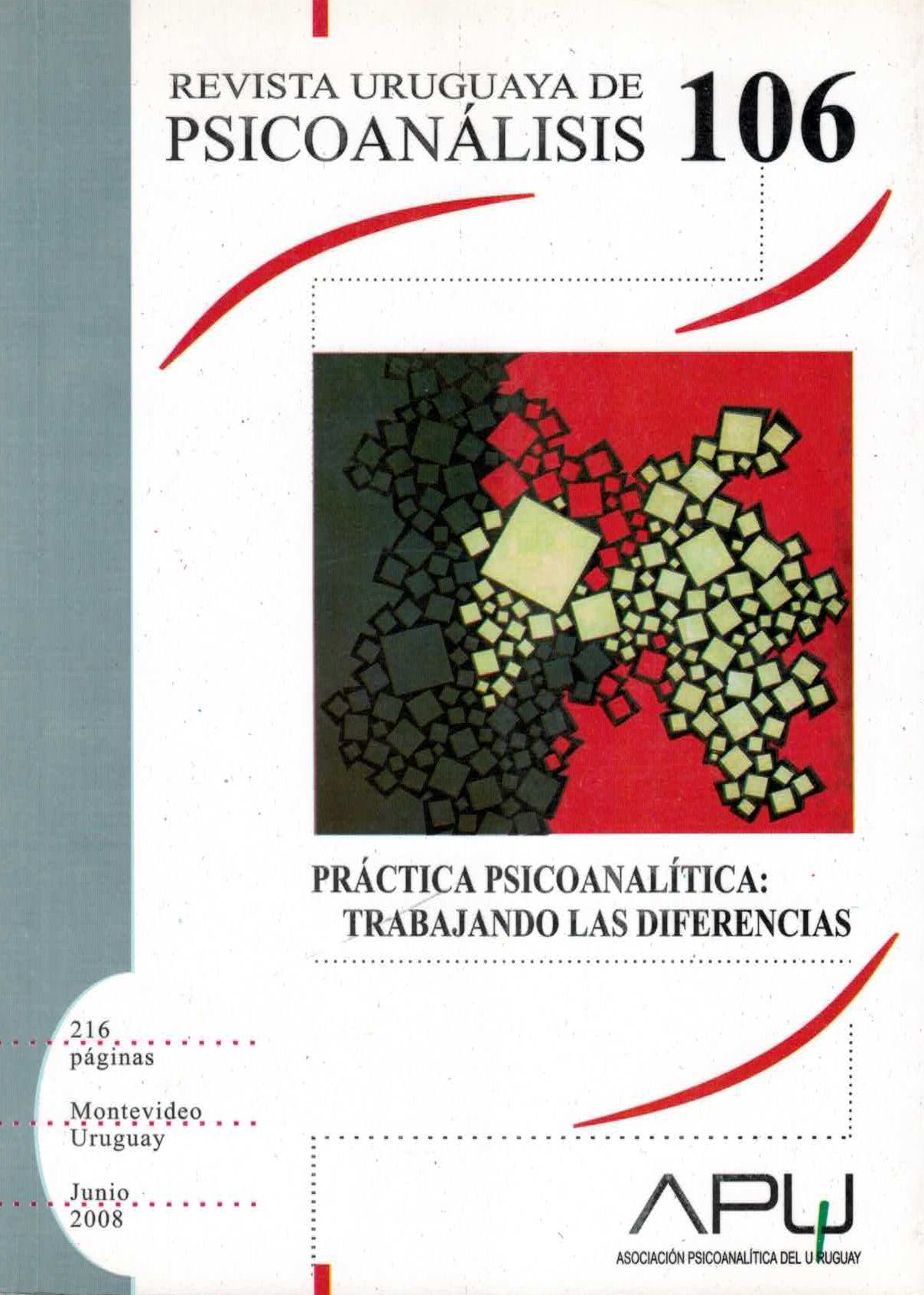On the practice. Transference and its effects.
Keywords:
transferencia, acto, deseo del analistaAbstract
The paper expresses a series of reflections on the elements which constitute analytic practice: disarticulation and articulation
among signifiers which address an other-Other in the person of the analyst. The uniqueness of each vicissitude of the transference
and the effects of transference in the analyst conjure up ‘the wish of the analyst’. The analyst, person, word and body at the service of a function which implies narcissistic renunciation, decanted from personal analysis. Privation, which enables a process of mourning sustained in sublimation, which provides us with the libido needed for our activity. Work on narcissism which indicates a continuous task on symbolic castration.
Different vicissitudes of the practice are analyzed, where such transferential effects, far from constituting themselves in an
immediate interpretation, claim for our working through them so that we can find our position again in the face of the unconscious
wish of the patient. It is not an intersubjective encounter, but rather the use of a tool which takes shape in every one of us (the wish of the analyst). In turn, in the analysand, the true as pect of the wishing subject, which settles in the symptom and in the transference, points to the way in which the loss that accounts for the signifying inscription and its sypmtomatic organization actually took place. Conflicts are actualized; they burn in the transference, as an effect of repetition, where desymbolization and symbolization alternate spaces of production, reproduction and subjective removal which are a prelude to the emrgence of new signifying articulations. The analyst, who is integrated into the repetition, in a form of equivalence, promotes the possibility of a transformation of the affects in play and of what sustains them. Work of the dual in transference which embraces the person of the analyst, where excessive love and hate converge and where it is essential not to ignore, but rather to know how to use this.
Out of ‘the body of the analyst’ and the symbolic which inhabits this body, co me the voice, the gaze, the capacity for
contact, which will constitute themselves as the object of the unconscious wish of the patient in transference. The importance
of the voice is considered, since it brings an object with it, which offers itself to be surrounded by the drive in the presence of the
patient.
Downloads
References
BADIOU A. (2000) - Revista Acontecimiento 2000, Nº. 12.
CASAS DE PEREDA, M. (1983) Representar, representaciones, el escenario infantil. En: El juego en psicoanálisis de niños, Biblioteca
Uruguaya de Psicoanálisis, Vol.1, Montevideo, Uruguay, 1986.
(1999) En el camino de la simbolización. Producción del sujeto psíquico. Paidós, Buenos Aires, 1999.
(2007) Sujeto en escena. El significante psicoanalítico. Isadora Ediciones, Montevideo, 2007.
FREUD, S. (1900) La interpretación de los sueños, en Obras Completas Tomo IV-V, Amorrortu, Buenos Aires, 1976.
(1915) Pulsiones y destinos de pulsión, en Obras Completas Tomo XIV, Amorrortu, Buenos Aires, 1976.
(1920) Mas allá del principio del placer. Obras Completas Tomo XXIII, Amorrortu, Buenos Aires, 1976.
LACAN, J. (1953-54) Seminario 1, Los escritos técnicos de Freud. Editorial Paidós.
(1960-61) Seminario 8, La transferencia. Paidós, Buenos Aires, 2003.
(1962-63) Seminario 10, La angustia, Paidós Buenos Aires, 2006.
(1964-65) Seminario 11, Los cuatro conceptos
fundamentales del psicoanálisis. Barral Editores, Barcelona, 1977.
(1967) - Proposición del 9 de octubre de 1967. No editado
(1967-68) Seminario 15, El acto psicoanalítico. No editado.
MLADEN, D. (2006) Una voz y nada mas. Ediciones Manantial, Buenos Aires, 2007.
LE GAUFEY, G. (2001) Anatomía de la tercera persona. Edelp S.A, Buenos Aires, 2001.
NASIO, J. D. (1994) El inconsciente es un nudo entre analista y paciente. Nueva Visión, Buenos Aires, 1994.
SCIARRETA (1988) Praxis psicoanalítica, Revista APA, pág. 9.



 This work is licensed under a
This work is licensed under a 